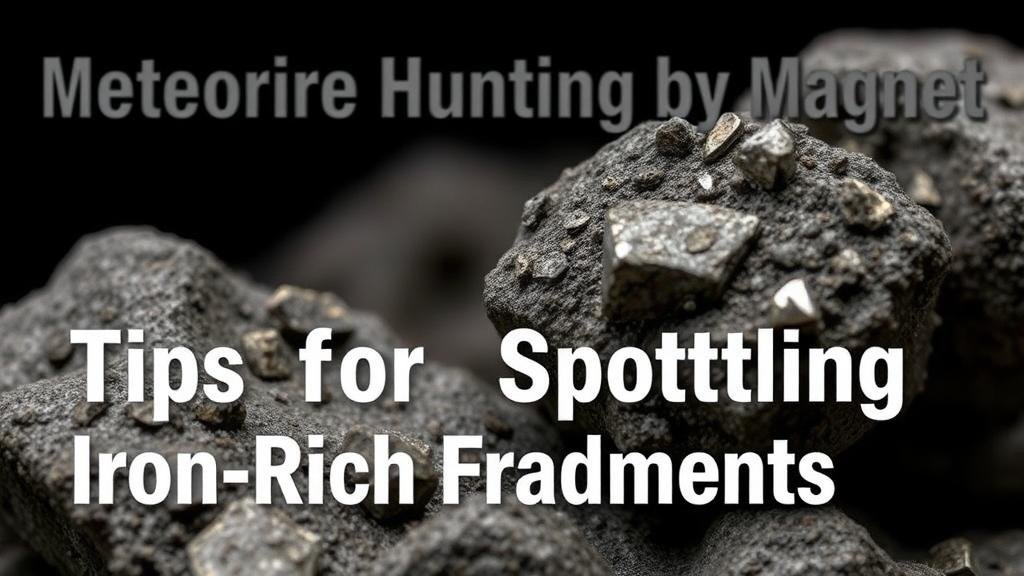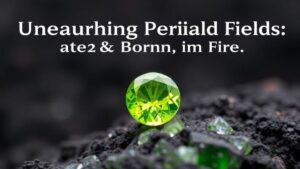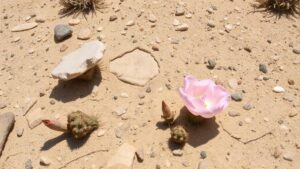Meteorite Hunting by Magnet: Tips for Spotting Iron-Rich Fragments
Meteorite Hunting by Magnet: Tips for Spotting Iron-Rich Fragments for Rockhounds and Mineral Collectors
Meteorite hunting has become an exciting and rewarding pursuit for rockhounds and mineral collectors alike. One effective method of locating these celestial fragments is through the use of magnets, particularly for iron-rich meteorites. This article provides tips and techniques on how to enhance your meteorite hunting experience using magnetic tools, while also exploring the types of meteorites to look for, effective hunting methods, and practical advice for collectors.
Understanding Meteorites and Their Composition
Meteorites originate from beyond Earths atmosphere, typically from asteroids or the Moon. are categorized into various classes based on their composition, with iron meteorites being one of the most sought-after types due to their unique characteristics. Iron meteorites are primarily composed of nickel-iron alloys, commonly found in three groups:
- Octahedrites: Noted for their distinctive patterns, they consist mainly of iron and nickel.
- Hexahedrites: These meteorites contain mostly pure iron and exhibit a smoother texture.
- Ataxites: Containing high nickel content, ataxites are rare and prized by collectors.
Statistically, iron meteorites comprise approximately 5% of all known meteorite falls, making them a rare find for collectors. So, employing a magnet in your search can dramatically increase your chances of locating these valuable fragments.
Tools You’ll Need for Magnetic Meteorite Hunting
Equipping yourself with the right tools is vital for successful meteorite hunting. To begin your hunt, consider the following essential items:
- Powerful Magnet: Use a neodymium magnet, which is significantly stronger than other magnet types. A common size is 1-inch by 1-inch, with a pulling force of at least 10-20 lbs.
- Compass: This handy tool helps you navigate and identify areas with a high potential for meteorite finds.
- GPS Device or Smartphone App: Record your hunting locations for future reference and to track successful finds.
- Field Guide: Carry a meteorite identification guide to help confirm your findings.
Effective Hunting Techniques
When you are ready to start your search, employing effective techniques can help improve your success. Here are several methods to consider:
- Target Areas: Focus on locations with high soil disturbance, such as fields, construction sites, or areas recently cleared of vegetation where meteorites may have been unearthed.
- Magnetic Sweep: Walk slowly across the chosen terrain while dragging or holding the magnet close to the ground. Pay attention to changes in magnetic force, as these may indicate the presence of iron-rich meteorites.
- Water Sources: Investigate riverbanks or streams, as tumbling can move meteorites downstream, revealing them in sediment.
By combining these techniques with the use of a powerful magnet, you increase your chances of discovering iron-rich meteorites effectively.
Best Practices for Collectors
Once you have identified a potential meteorite, there are some best practices to consider for collectors:
- Handle with Care: If you believe you’ve found a meteorite, handle it gently. Use gloves to avoid contaminating the specimen with oils from your skin.
- Documentation: Keep a record of where and when you found the meteorite, including GPS coordinates and photographs of the location. This data can enhance the meteorites provenance and value.
- Initial Testing: To confirm the find, conduct preliminary tests such as checking for metallic content with a magnet, observing for fusion crust (a thin layer formed during atmospheric entry), and looking for distinctive features like chondrules in stony meteorites.
Real-World Applications and Benefits
Meteorite hunting is not only a fascinating hobby but also has practical applications in scientific and educational fields. Meteorites can provide insights into the formation of our solar system, making them valuable for both researchers and educators. Collectors often engage with the scientific community by contributing findings to research institutions, enhancing the overall understanding of celestial materials.
Actionable Takeaways
In summary, meteorite hunting via magnets can significantly elevate your chances of finding iron-rich fragments. By understanding meteorite compositions, employing effective magnetic hunting techniques, and following best practices as a collector, you can enjoy this rewarding hobby while contributing to science. As you embark on this journey, remember:
- Gear up with essential tools, especially a powerful magnet.
- Learn the characteristics of various meteorite types.
- Be patient and persistent in your search.
Happy hunting!



